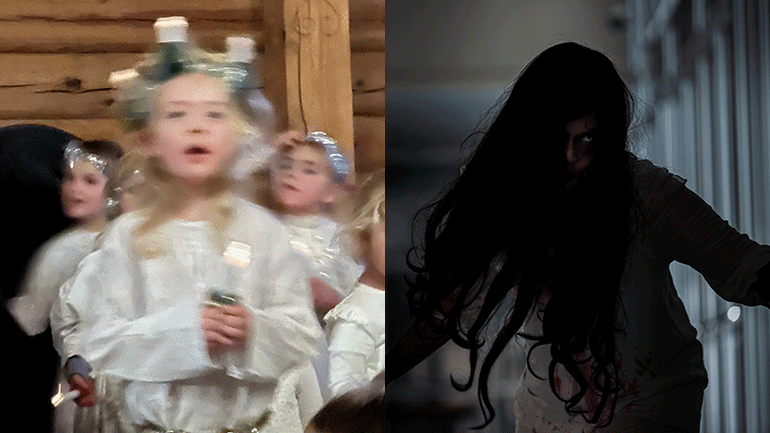“We have two different traditions occurring December 13th. The Lussi tradition is the oldest of them, and the Lucia tradition is actually Swedish cultural import” says Associate Professor at the Department of Culture, Religion, and Social Studies, Herleik Baklid, at the University of Southeast Norway.
Catchy tunes and saffron
The Norwegian St. Lucia tradition is a heartwarming event that is mainly celebrated in schools and kindergartens. The children participate in a procession dressed in white outfits, symbolizing purity and light. The children often hold candles or wear a crown of candles, illuminating the dark winter day.
This tradition is also accompanied handing out yellow, saffron-scented buns studded with raisins, known as “lussekatter”.
A central piece of the tradition is “the Santa Lucia song”, which is quite catchy and evokes the spirit of the season. In later years several new versions of this song has reached the surface and now enriches the tradition.
Cultural import
The day is dedicated to Santa Lucia (Saint Lucy), who was a young Christian girl born in Sicily in the year 283. She is remembered for her dedication to helping the poor, carrying food and drinks to them with a candle on her head to keep her hands free. This saint persuaded her mother to share her dowry with the poor. The mother’s fiancé did not like this and denounced Lucia, who suffered martyrdom around 900 years ago.
“The Lucia tradition with the girl in white with a wreath around her head can be traced back to the 1800s from the area around Lake Vänern in Sweden. It came to Norway in the 20th century. This is Swedish cultural import,” Baklid informs.
Lucia is said to have died with a burning light in her hand, and thus a honourable custom was established.
“Swedish students brought the custom to the universities of Uppsala and Lund, and developed it further, among other things, by emphasizing the light procession more strongly. When they celebrated Lucia, they initially went around to people’s homes. There, Lucia served food and drink. Then it collectively spread to schools and kindergartens,” says Baklid.
He adds that some believe Lucia may also have German origins.
Speaking Animals
The tradition of “Lussi Langnatt” (Lussi Longnight) also falls on the holy memorial day of the Catholic saint.
“Lussi is a malevolent female creature that roams around. December 13th was considered the longest night of the year in folk tradition. In the Middle Ages, the winter solstice fell on December 13th,” says Baklid.
That night, it was said, that the animals could speak. And the livestock found it tough to get through.
“Lussi Night the long, said the cow and bit three times in the tether. She’s like two, said the beaker,” it is said from folk tradition.
Tearing down chimneys
“She was said to move around and check that certain types of work on the farms were done. She could also come on Christmas Eve, December 24th. Then she could shout down peoples chimneys: ‘no brewing, no baking, no big fires have’, says Baklid.
The consequence of not having done what one should have could be that Lussi tore down the chimney and broke whatever was on the fireplace. Earlier, it was considered that the Christmas period began on December 13th.
“Most dangerous of all was for children who had not been nice. She could punish them,” says Baklid.
Let’s wait to see whether it’s the one or the other that shows up this time.
Text by: Else Børte
